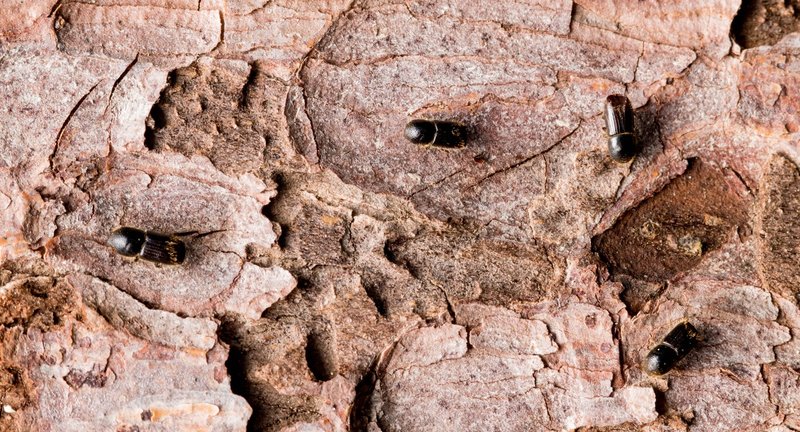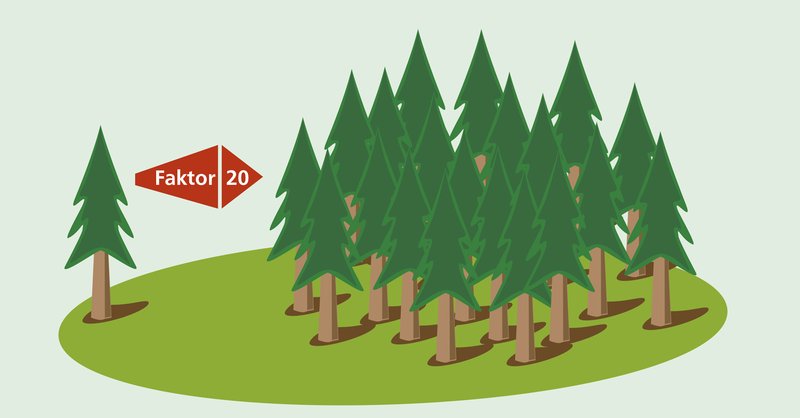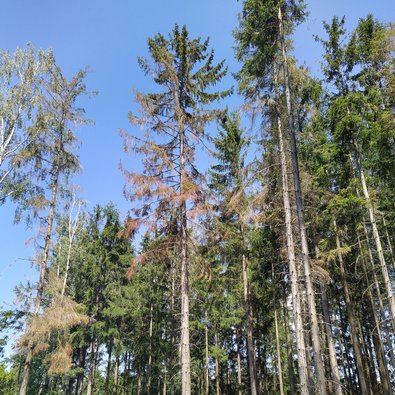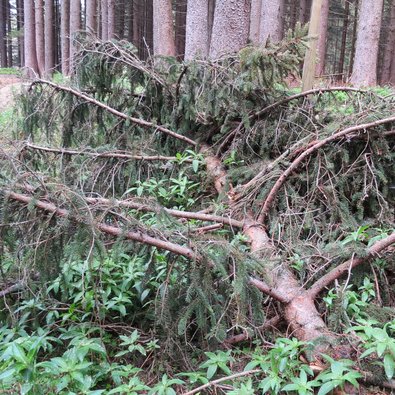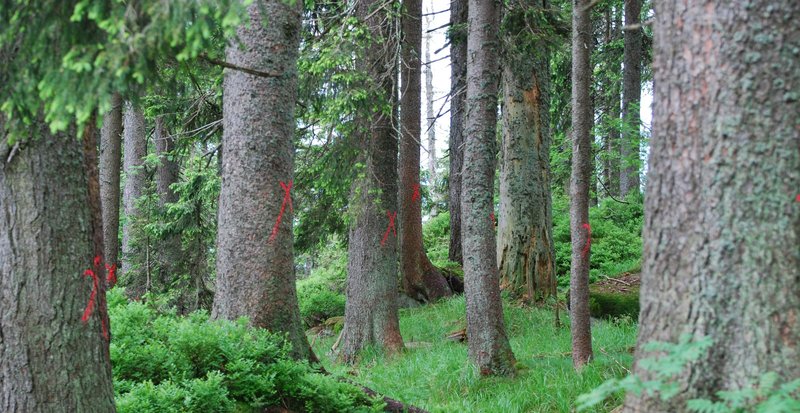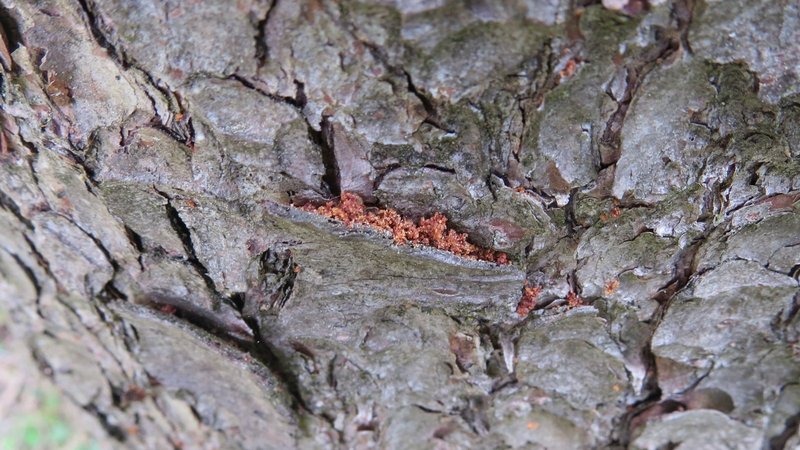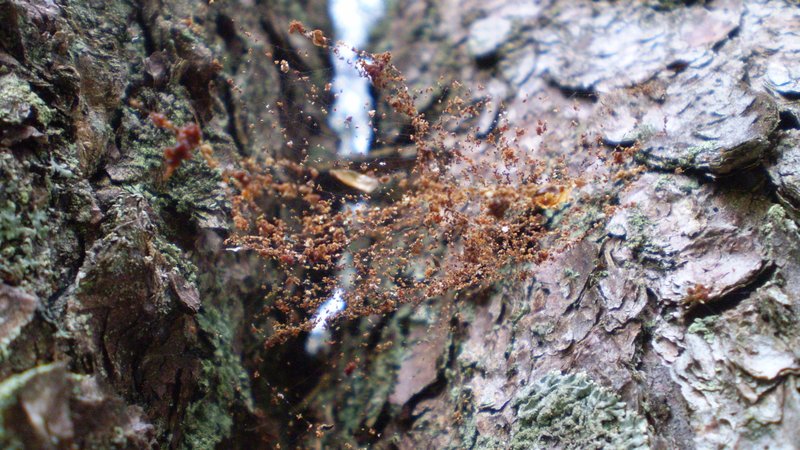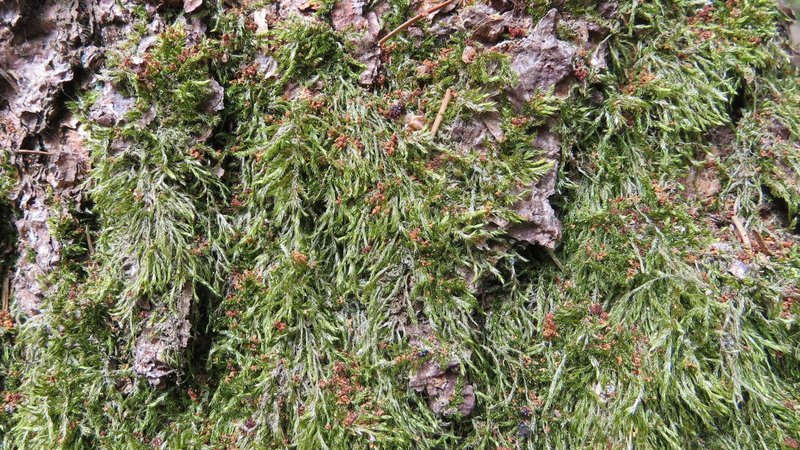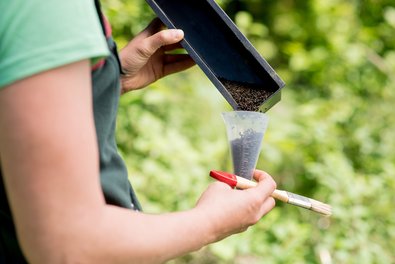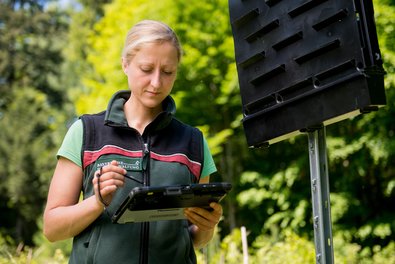Several conditions have to be fulfilled before the eight-toothed spruce bark beetle swarms and spruce are infested:
- For the beetles to swarm, the air temperature must be above 16.5 °C.
- The sum of the maximum daily temperatures above 8.3°C (development start of the eight-toothed spruce bark beetle) from 1. April must exceed 140 “day-degrees” (e.g.: maximum daily temperature 18.3 °C - 8.3°C = 10 “day-degrees”).
- A length of day such as is prevalent from mid-April onwards ensures that the eight-toothed spruce bark beetles all fly at the same time.
As soon as these conditions are met and the weather turns warm and dry, we can expect the first large-scale and sustained swarming of the year.
Hazard potential
It is assumed that a simultaneous attack by a few hundred beetles is sufficient to overcome the defences (resin flow) of vital spruce trees. If the trees are already damaged or drought conditions prevail, the trees’ resistance is correspondingly lower. European eight-toothed spruce bark beetles - like their smaller relative, the smaller European six-toothed spruce bark beetle - have an enormous reproductive potential. Depending on the weather conditions, they can produce 2 - 3 generations per year under the current climatic conditions. In addition, there are several sibling broods per generation, as the parent animals leave the breeding gallery after successfully laying eggs, and continue breeding elsewhere. For a beetle year with favourable development conditions, the following scenario could be derived for the eight-toothed bark beetle:
- An infested old spruce releases at least 20,000 beetles, of which at least 50% are males.
- These 10,000 male beetles are able to infest at least 20 more neighbouring trees.
- More than 400,000 beetles (200,000 males) can in turn swarm from these, potentially resulting in the infestation of another 400 spruce trees.
The search for drill dust
The swarming spruce bark beetles first drill into fresh lying and standing wood. If the lying wood is occupied, the approaching beetles drill into standing spruce. In the following one to two weeks, the beetles continuously eject a lot of drill dust as they create the mother gallery. Targeted searches should be carried out to find this drill dust.
The search for drill dust is time-consuming, but it is the only reliable way of diagnosing an infestation at an early stage, and it ensures the maximum efficiency of control measures. The searches should be carried out in dry, preferably windless weather. Regular inspections are necessary from the start of swarming, and should be carried out weekly if possible during the waves of swarming.
Step 1 - Where should you look?
- Start by looking for drill dust at beetle nests from the previous year. The beetles tend to bore into trees on the sunlit edges of the forest first. Even now, infested spruces from the previous year are still only just becoming visible through crown discolouration. Be aware of this and make sure you search any spruce trees nearby for signs of infestation (Figure 3).
- Increased infestation is to be expected In the immediate vicinity of spruce wood that has been left lying around (wood piles, damaged timber, firewood, slash residues) (Figure 4).
- If the stand conditions have changed significantly, e.g. the edges of the stand have been exposed, check there as well.
At temperatures above 30 °C, the eight-toothed spruce bark beetle will also retreat into the interior of the stand to infest trees there. Then the search for infestation should also be extended into the interior of the stand.
Step 2 - When should you look?
- The drill dust can only be found in the first two weeks after the beetles have penetrated the bark. The longer you wait after the bark has been penetrated, the harder it is to find the drill dust. It is thus important to pay attention to when the majority of the beetles flies.
- It should be dry and warm.
- If possible, wait a day after rainfall, and then search again. Fresh drill dust should again be visible. Drill dust can also be found after rainfall, but only with great difficulty!
Step 3 - What do you need?
- Spray paint: to mark infested trees (Figure 5).
- A bark peeler or pocket knife: to look under the bark to see how far the brood has developed.
- Glasses or magnifying glass and binoculars: the drill dust is very fine and there may not be much of it, so you have to look carefully. Spruce bark beetles prefer to drill their way in at the base of the crown, i.e. at a height of several metres. With binoculars you can then for example see drops of resin at the base of the crown.
- Time: take your time and look closely. Especially after rainfall, it is easy to miss an infested trunk. Allow about 15 minutes per critical point, plus travel time.
Step 4 - Be thorough
- It is usually sufficient to search the first two rows of trees in the places described above.
- Walk systematically from tree to tree.
- Look all the way round each tree.
Step 5 - Where exactly will you find signs?
- Drill dust is to be found especially behind scales of bark; for this it is helpful to look very close to the trunk and from the top downwards - this is the best way to see behind scales of bark (Figure 6).
- On dead branches, branch forks or other surfaces that catch the falling bore dust;
- On spiders’ webs (Figure 7);
- In the moss at the base of the trunk (Figure 8);
- On the ground vegetation; the drill dust remains lying especially on rough-leaved plants such as blackberries or hazelnut; hardly any drill dust is found on beech leaves after rainfall.
Step 6 - What should you do?
- Drill dust, even in small amounts, is a sure sign of infestation with the European eight-toothed spruce bark beetle. It is usually an illusion to hope that the spruce trees will produce enough resin to defeat the beetles. Finding drill dust always means felling, processing and removing the wood.
- Make sure you check the neighbouring trees carefully for further infestations.
- Make a plan for the processing and utilisation of the wood. The local silviculture or forest owners’ association is also on hand to assist you with this.
In the best case scenario, forest owners are able to catch the parent beetles at the breeding site before they fly out again to create a sibling brood elsewhere. There are only one to two weeks in which to do this. The effort is most effective when forest owners look for drill dust in the first wave of swarming. Then they have a chance of skimming off the beetle population early in the year and thus successfully preventing the spread of the infestation. They should certainly take action before the European eight-toothed spruce bark beetle and co. are able to multiply exponentially. They can achieve more at this stage than with the same effort in summer, when the first generation has already flown.
If forest owners have found freshly infested beetle wood, it must be processed and removed from the forest promptly. If removal to a timber processing plant is not possible within one to two weeks, the infested wood should be stored at least 500 m away from the nearest coniferous stand or, if necessary, treated with plant protection products before the beetles have the chance to fly.
Beetle-infested wood piles - what to consider
Any piles of beetle-infested timber still stored in the forest from the winter should be removed by mid-April at the latest, depending on the weather. Here, too, it is important to look under the bark to see if the beetles have already flown:
- If they have, no further treatment is necessary.
- If not, or if most of the beetles are still in the bark (and no other pest control options are available), then the wood piles should be treated with plant protection products.
- The stand around these wood piles should be intensively inspected for possible infestation.
When working with infested wood piles, you should also look out for bark that is peeling off. If bark beetles are still in the bark, they will remain in the forest when the timber is removed. In this case, it is advisable to collect and dispose of the bark.
The search for infestation with the smaller European six-toothed spruce bark beetle
With the six-toothed spruce bark beetle, early detection of an infestation is difficult. The fine drill dust occurs only in small quantities, and it is not detectable at the base of the trunk. A characteristic feature of infestation with the smaller European six-toothed spruce bark beetle is a reddish-brown discolouration of the crown that spreads from top to bottom, and which only appears weeks or months after the infestation, however, so that trees around about are usually already infested. To be on the safe side, sample felling is recommended.
Further searches for infestation over the course of the year
In the course of the summer and outside the swarming season of bark beetles, i.e. in the autumn and winter months, the trees infested in spring and summer can be identified through:
- bore holes
- holes in bark exposed by woodpeckers
- the shedding of green to pale yellow needles
- reddish discolouration of the crown
- the shedding of bark while the crown is still green
There are usually still beetles in these trees as well, so it is imperative to fell and remove them, too. Increased resin flow at the base of the crown is a warning sign, but does not reliably indicate beetle infestation. If the diagnosis is unclear, it is essential to take a felling sample.
Further information
On the LWF’s bark beetle infestation information gateway , you can get a daily, up-to-date regional risk assessment for infestation with the eight-toothed and the six-toothed spruce bark beetle, as well as data from the individual monitoring sites.
Figs 9 and 10: Bark beetle monitoring in Bavaria: Specialists at the LWF evaluate the data collected from traps and breeding trees in forest districts. The results are then linked to the current local situation assessment made by the Offices of Food, Agriculture and Forestry, and presented in Map form . Photos: Tobias Hase (StMELF)

